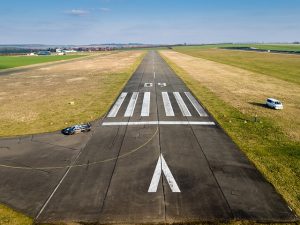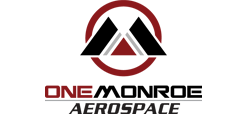
If you’ve ever looked out the window at a major airport, you may notice markings on the runway. While there are different types of runway markings, threshold markings are arguably one of the most important. They help pilots touch down and land safely. What are threshold markings exactly, and why are they so important?
Overview of Threshold Markings
Threshold markings are visual markings — typically a set of symmetrical white lines similar to a barcode — that indicate the beginning of a runway where airplanes can safely land. When preparing to land, pilots will look for these markings and use them as a visual reference.
Most threshold markings feature one of two designs:
- Four white stripes (for runways less than 60 feet wide)
- Up to white 16 stripes (for runways at least 200 feet wide)
Why Runways Have Threshold Markings
Runways can vary in length. Small airports often have short runways measuring just 2,000 to 3,000 feet long, whereas larger airports have much longer runways measuring up to 18,000 feet. Not all of the paved surface is suitable for landing, however. Many runways have designated space for taxiing, rollouts and other non-landing activities. With threshold markings, pilots can find a suitable space on which to land airplanes.
If runways didn’t have threshold markings, there would be a greater risk of landing-related accidents. Pilots may inadvertently land on a unsuitable space, which may cause injury to passengers or ground crew. As a result, the U.S. Federal Aviation Administration typically requires threshold markings on runways with instrument approaches.
Threshold vs Displaced Threshold Markings
Some runways only have threshold markings, but others have both threshold and displaced threshold markings. Displaced threshold markings are commonly used on long runways, such as those found at major airports. They indicate the space before the actual threshold that’s not suitable for landing.
If threshold markings are located at the very beginning of a runway, the runway doesn’t have a displaced threshold area. If threshold markings are located farther down the runway — not at the very beginning — the runway likely has a displaced threshold area.
Displaced threshold markings consist of white arrows and a single white line or bar. The white arrows follow the runway centerline. The white line, known as a threshold bar, separates the threshold and displaced threshold. When pilots approach a runway, they will look for the white arrows and threshold bar to ensure they don’t accidentally land in the displaced threshold area.



